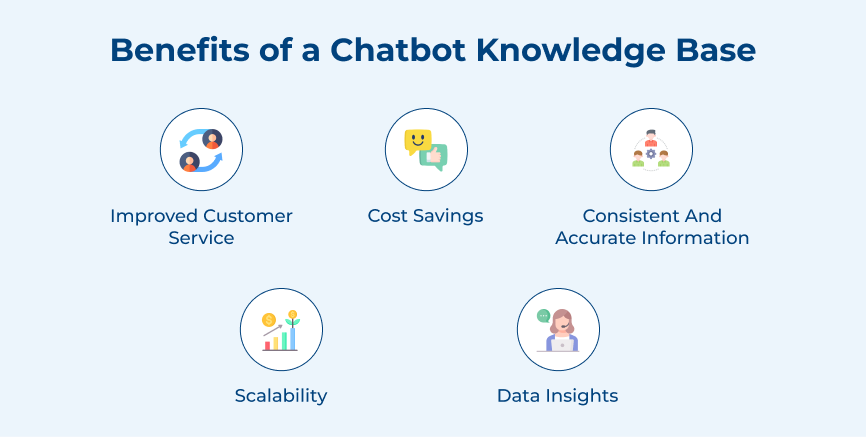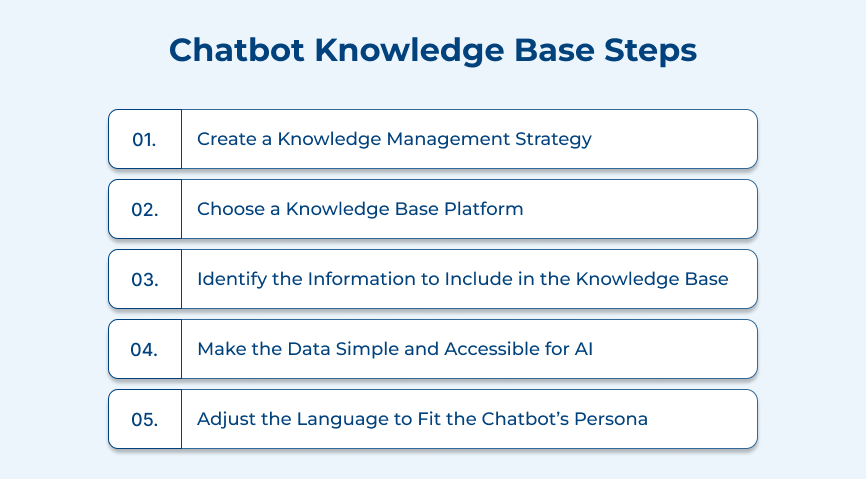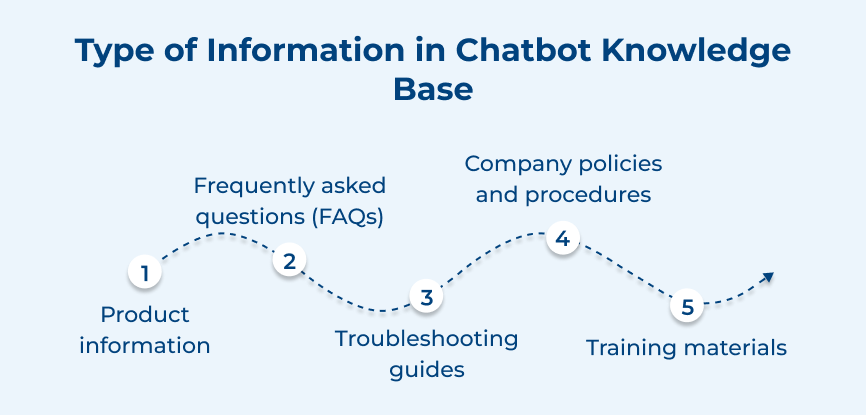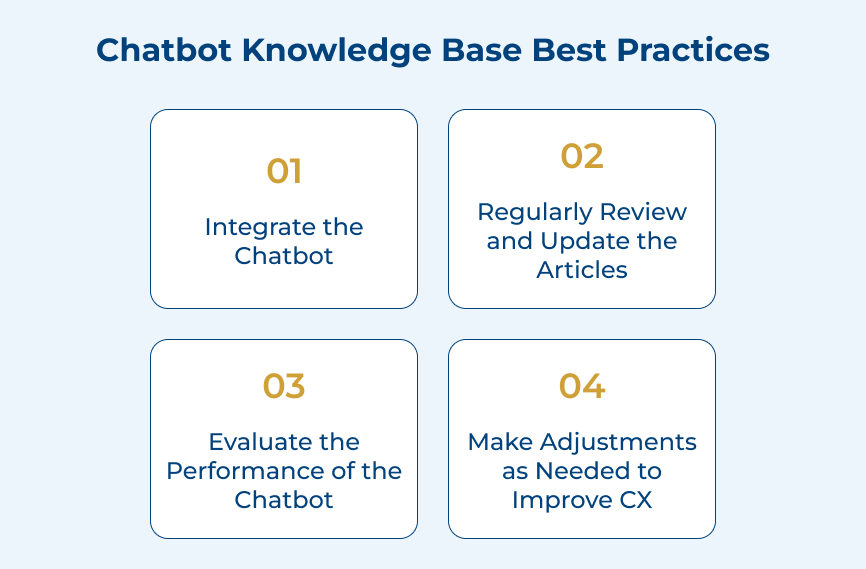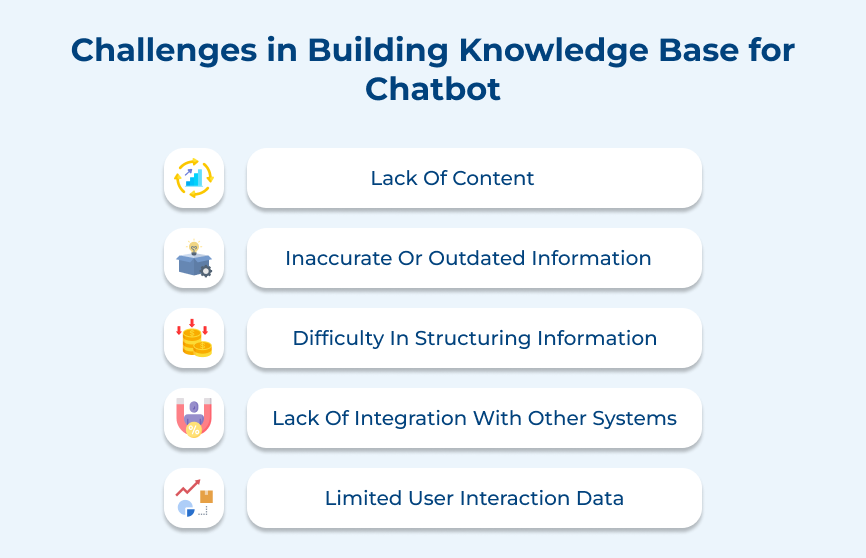1. Create a Knowledge Management Strategy
Creating a knowledge management strategy is a crucial step in building a knowledge base for a chatbot. The strategy involves identifying, capturing, storing and sharing knowledge within an organization to improve efficiency. A solid knowledge management strategy ensures that the chatbot has access to accurate information. It can help to provide accurate responses to user queries.
The step is important because it helps the chatbot to understand user inputs and provide relevant information quickly. Let’s assume , a company can use a knowledge management strategy. It compiles FAQs, product information, troubleshooting guides and other content. It can help to train their chatbot to assist customers efficiently.
Pro tips:
- Regularly updating the knowledge base with new information
- Categorizing knowledge for easy retrieval
- Involving subject matter experts in the knowledge management process.
2. Choose a Knowledge Base Platform
Building a knowledge base for a chatbot is essential in ensuring that the chatbot has accurate information to provide to users. One crucial step in the process is choosing a knowledge base platform that fits the needs. Selecting the right knowledge base platform is vital. It will determine how easily businesses can organize and manage information. It also shows how efficiently the chatbot can retrieve and deliver the necessary responses.
Let’s consider a scenario where a customer asks the chatbot a specific question about the product or service. If the knowledge base platform is user-friendly, the chatbot can quickly locate the relevant information. It leads to a more positive user experience. There are various knowledge base platforms available:
- Omni24
- Veemo
- Confluence
- Helpjuice
Pro tips:
- Consider the scalability of the platform to accommodate future growth.
- Look for platforms that offer analytics to track user engagement and improve content.
- Choose a platform that supports multimedia content to enhance user engagement.
3. Identify the Information to Include in the Knowledge Base
When building a knowledge base for a chatbot, one crucial step is to identify the information to include. The step involves determining what valuable information will be stored in the knowledge base and used to provide accurate responses. Identifying the right information to include is important. It ensures that the chatbot is equipped with the necessary knowledge to assist users.
Without the right information, the chatbot may not be able to provide accurate responses, leading to a poor experience. Let’s assume in a customer service chatbot, the knowledge base should include information about products, policies and common issues. The information will enable the chatbot to quickly address customer concerns and provide relevant solutions.
Pro tips:
- Conduct thorough research to understand the most common customer questions and issues.
- Collaborate with subject matter experts to ensure that accurate and up-to-date information is included.
- Use data analytics to track user interactions and identify areas where the chatbot may need more information to improve responses.
4. Make the Data Simple and Accessible for AI
When building a knowledge base for a chatbot, one crucial step is to make the data simple and accessible for AI. It ensures that the chatbot has easy access to the information it needs to effectively communicate with users. Simplifying and structuring data for AI is important. It allows the chatbot to quickly retrieve and process information, leading to more accurate responses.
Organizing data clearly can help easily navigate through the knowledge base and provide relevant answers to user queries. Let’s consider a chatbot for a customer service department that needs access to product information. Organizing the database with clear categories and tags helps the chatbot quickly find product details for customer inquiries.
Pro tips:
- Use a consistent format for data entry to ensure uniformity and easy retrieval.
- Implement natural language processing techniques to help the chatbot understand user queries more accurately.
- Regularly update the knowledge base to keep information relevant and up-to-date for the chatbot to utilize effectively.
5. Adjust the Language to Fit the Chatbot’s Persona
When building a knowledge base for a chatbot, one important step is to adjust the language to fit the chatbot’s persona. It involves creating a consistent tone that aligns with the brand and personality of the chatbot. Businesses can enhance the user experience by doing so and build a stronger connection with the audience.
One use case for adjusting the language is if businesses have a chatbot meant for a fashion brand. The language used should be trendy and reflect the brand’s style. It helps to create a cohesive experience for users interacting with the chatbot.
Pro tips:
- Define the chatbot’s personality traits and brand voice before starting to write content. It will ensure a consistent tone throughout all interactions.
- Tailor the language to the target audience. Consider who will be using the chatbot and adjust the language accordingly to resonate with them.
- Use humor and personality to make the chatbot more engaging. Adding a touch of humor or personality can make interactions more enjoyable for users.
What Type of Information Should be Included in a Chatbot Knowledge Base?
Following are the essential types of information that should form the backbone of your chatbot’s knowledge base.






